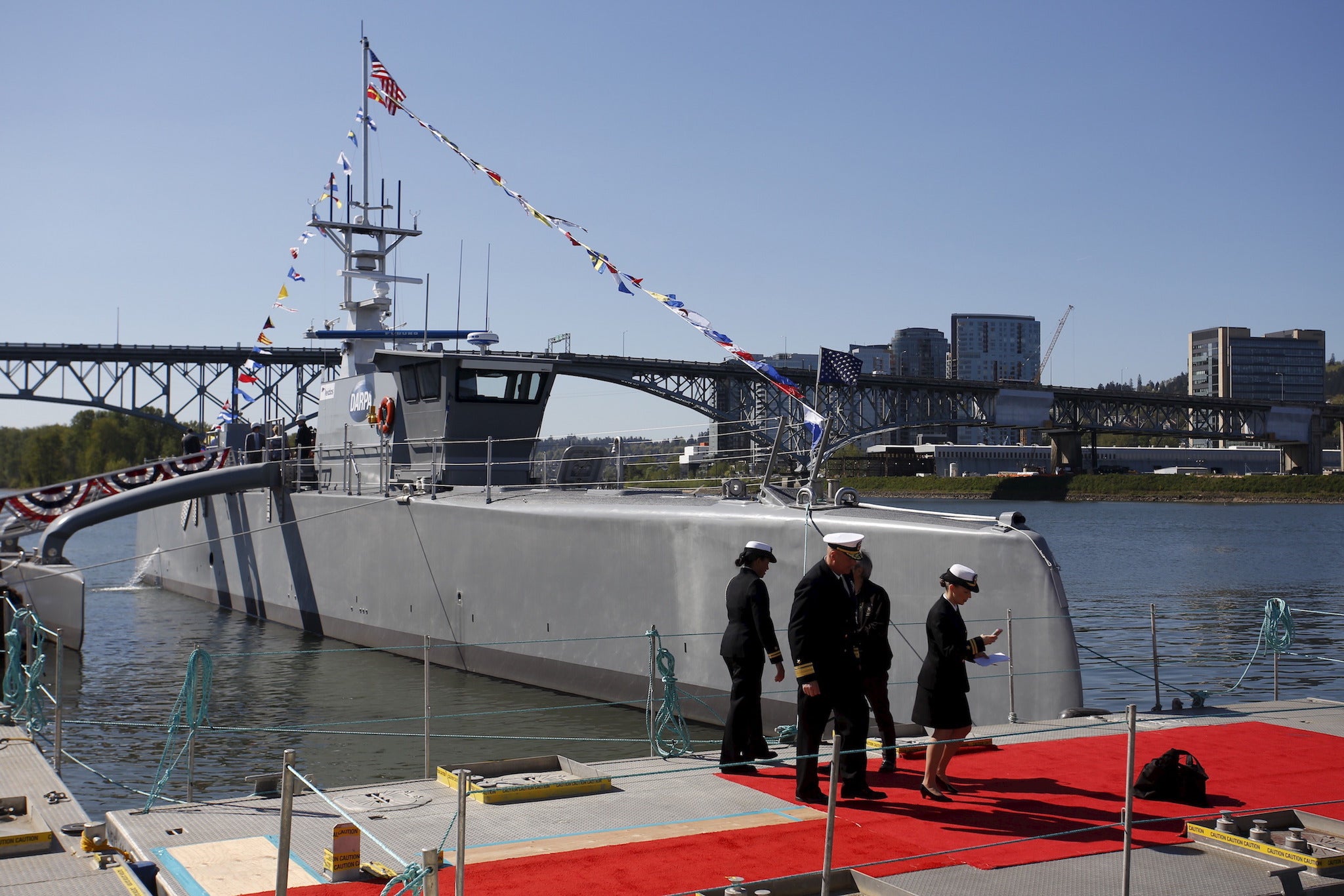Unmanned ship sailing itself around the ocean could be hacked, experts warn
‘Sea Hunter’ uses radar, sonar, cameras and GPS to find its way around the sea, and will be tested over the next two years

A huge US navy ship is piloting itself around the sea – but hackers might be able to take control of it, experts have warned.
The Pentagon has shown off the new ship, called Sea Hunter, which is the biggest unmanned surface vessel ever made. The 132-foot ship can guide itself up to 10,000 nautical miles, and will be used to find submarines and mines.
But experts have warned that without humans to drive it, the ship could be hacked and forced to go rogue.
The Navy will be testing out those and other concerns during a trial period of two years, where officials will also watch to see whether it can make its way around the sea without crashing.
The military’s research arm, the Defense Advanced Research Projects Agency, or DARPA, will be testing the ship alongside the Navy. It will sail around the San Diego coast, operating itself on its own.
That marks it out from previous, smaller ships that have been operated from outside but not actually by themselves.
"It's not a joy-stick ship," said DARPA spokesman Jared B. Adams, standing in front of the sleek, futuristic-looking steel-gray vessel docked at a maritime terminal in the heart of San Diego's shipbuilding district, where TV crews filmed the robotic craft.
"Sea Hunter" relies on radar, sonar, cameras and a global positioning system. Unmanned ships will supplement missions to help keep service members out of harm's way, Adams said.
Besides military leaders, the commercial shipping industry will be watching the ship's performance during the trial period. Maritime companies from Europe to Asia have been looking into developing fleets of unmanned ships to cut down on operating costs and get through areas plagued by pirates.

During the testing phase, the ship will have human operators as a safety net. But once it proves to be reliable, it will maneuver itself — able to go out at sea for months at a time. With its twin diesel engines, it could go as far as Guam from San Diego on a mission, developers say. There are no plans at this point to arm it.
"There are a lot of advantages that we're still trying to learn about," program manager Scott Littlefield said.
The idea in the commercial sector has sparked debate over whether it's possible to make robotic boats safe enough. The International Transport Workers' Federation, the union representing more than half of the world's more than 1 million seafarers, has said it does not believe technology will ever be able to replace the ability of humans to foresee and react to the various dangers at sea.
Others have expressed concern about hackers taking control. Military officials have been working on hacker-proof protections and say it's possible to make ships cyber-secure.
The "Sea Hunter" was built off the Oregon coast, and it moved on a barge to San Diego's coastline. The prototype can travel at a speed of up to about 30 mph and is equipped with a variety of sensors and an advanced optical system to detect other ships.
The program to develop the ship cost $120 million, though DARPA officials say the vessels can now be produced for about $20 million.
Additional reporting by agencies
Join our commenting forum
Join thought-provoking conversations, follow other Independent readers and see their replies
Comments
Bookmark popover
Removed from bookmarks